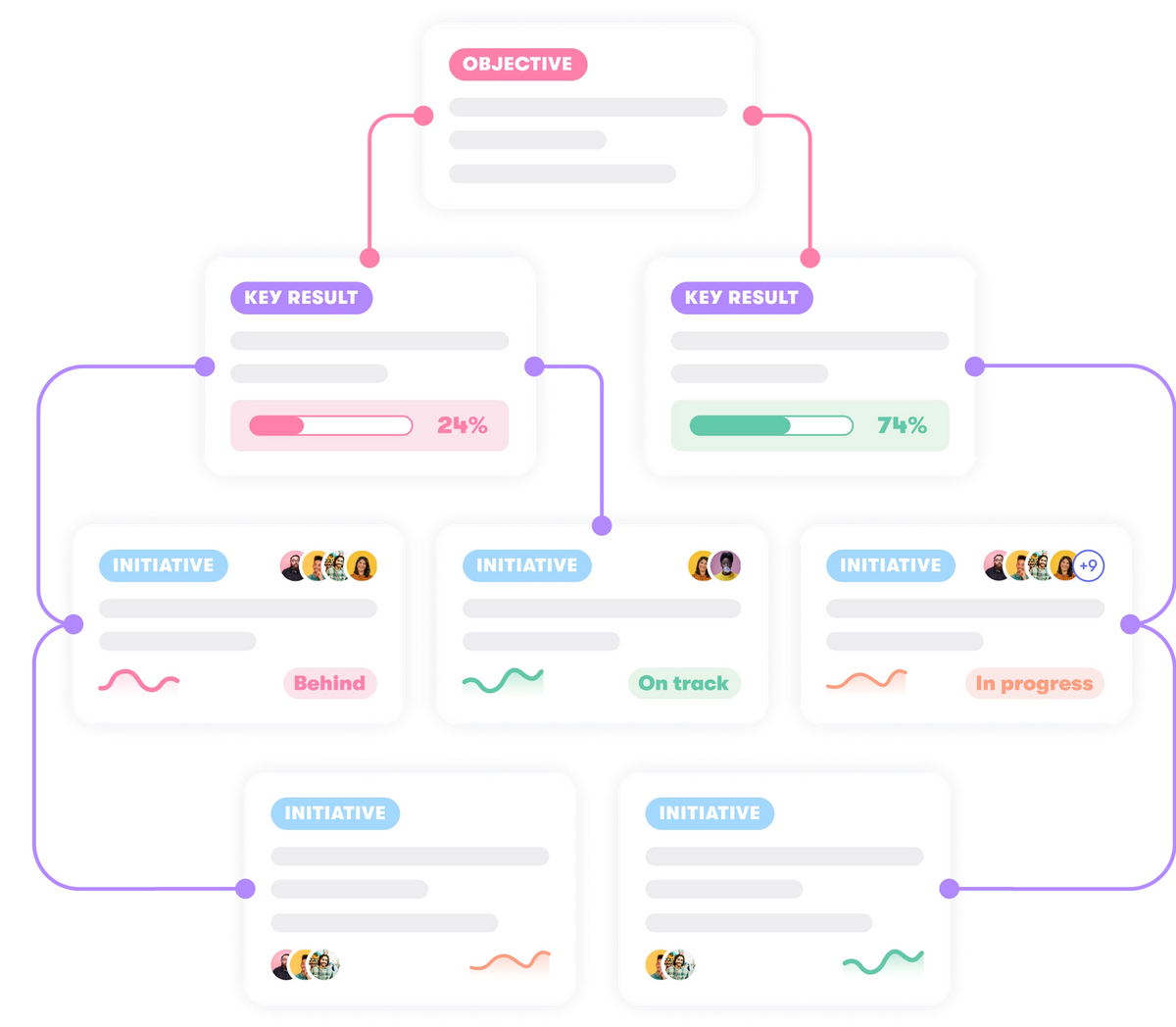You'll need to decide how much detail you want to include in your OKRs. But is there a right number of levels OKRs should have?


The right number of levels for OKRs
Ultimately OKRs should comprise three levels: objectives, key results and initiatives.
However, how you structure this hierarchy across your organisation depends on your size. For example, do you want to set objectives at the company level or department level? Does each micro-team within a department get team-specific key results, or do they get initiatives? Should each team member have their own initiative, or is that set at the team level?
To make OKR setting within the 3-level structure simpler, check out this OKR Quickstarter e-book.
Why choose Collato to track your OKRs?
Why choose Collato to track your OKRs?

Give work meaning
Visualize the connection between team initiatives and company goals.

Track progress precisely
Track progress in real-time to see which initiatives are advancing goals to 100%.

Work your way
Create workflows down to the smallest task level without the need for yet another project management tool.
OKR FRAMEWORK
VIEW DETAILS

Who created OKR?
VIEW DETAILS

How do you set good OKRs?
VIEW DETAILS

How do companies implement OKRs?
VIEW DETAILS

How do you introduce OKRs?
VIEW DETAILS

Why OKR?
VIEW DETAILS

When should OKRs be set?
VIEW DETAILS

What are OKRs in business?
VIEW DETAILS

Who is responsible for OKRs?
VIEW DETAILS

How many OKRs should you have?
VIEW DETAILS

Is Google still using OKRs?
